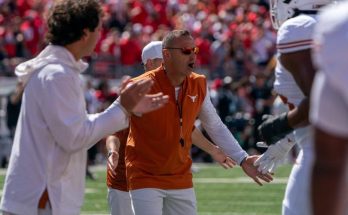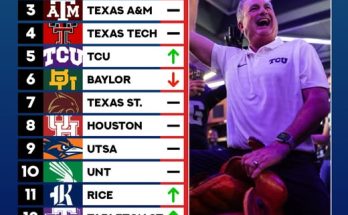Artemi Panarin has long been the face of the New York Rangers’ modern revival—a dynamic scorer, creative playmaker, and fiery competitor whose unique flair has made him a fan favorite and locker room leader. But on what should have been a quiet offseason day, news out of New York sent shockwaves through the hockey world: Panarin had reportedly suffered a visible deformity during an off-ice incident, raising serious concerns about both his immediate health and his long-term future in the game. As reports slowly trickled out, speculation swirled, and the Rangers organization found itself thrust into crisis mode.
The details remain scarce and shrouded in ambiguity. According to early statements from sources close to the team, the incident did not involve on-ice training or sanctioned team activities. It was not a collision in practice, not a gym injury, and certainly not a typical sprain or muscle strain. Witnesses described the aftermath as “alarming,” with one even calling it “the most disturbing visual I’ve seen involving a professional athlete in years.” Word quickly spread that Panarin’s injury was not only serious, but visibly disfiguring—a word rarely, if ever, used in the realm of hockey-related ailments.
What exactly happened has yet to be confirmed. Some accounts suggest Panarin suffered a freak accident involving heavy equipment during a private workout session. Others whisper of a domestic mishap—an innocuous moment that spiraled unexpectedly. The Rangers have kept their public statements brief and cautious, acknowledging an “off-ice medical incident” and noting that Panarin is under evaluation by team doctors and independent specialists. No timeline for recovery has been offered. The silence has only fueled the frenzy.
For Rangers fans, the thought of losing Panarin—even temporarily—is a punch to the gut. The 33-year-old winger has been the cornerstone of the franchise since signing a blockbuster deal in 2019. His offensive wizardry, coupled with his electric chemistry with linemates like Mika Zibanejad, has transformed the Rangers from a rebuilding project into a perennial playoff contender. Panarin doesn’t just score goals; he engineers momentum, lifts morale, and sets the tone with every shift. His absence isn’t merely a gap on the depth chart—it’s a rupture in the team’s identity.
Beyond the ice, Panarin is a unique figure in hockey culture. Outspoken, deeply expressive, and always candid, he’s known for his charismatic demeanor and for embracing the role of entertainer as much as competitor. In an era where players are often media-trained into blandness, Panarin remains refreshing—an athlete who dances to his own rhythm, unafraid of vulnerability or humor. So, when a player of that personality is hurt in such a mysterious and disconcerting way, the emotional toll extends far beyond the locker room.
The psychological ripple effect on the Rangers roster cannot be overstated. This is a team built around its stars. With Igor Shesterkin anchoring the net and Adam Fox quarterbacking the defense, the Rangers are constructed like a championship jigsaw—and Panarin is the irreplaceable center piece. Without him, the entire structure feels imbalanced. Line combinations that thrived on his vision and spacing will need retooling. The power play, long orchestrated by his left-handed command from the half-wall, will lose its maestro. Young forwards like Alexis Lafrenière and Kaapo Kakko will be thrust into larger roles, whether ready or not.
From a contractual standpoint, the implications are just as murky. Panarin’s deal, worth over \$11.6 million annually through the 2025-26 season, is one of the largest in NHL history. If the injury proves to be career-threatening—a notion still premature but lingering in the shadows—the team could explore long-term injured reserve (LTIR) relief. However, cap maneuvering won’t fill the creative void Panarin leaves behind. The Rangers can’t replace what he brings—not through free agency, not through trade, and not with a promotion from Hartford. He is a one-of-one.
There’s also the public relations dimension. The Rangers, like every major franchise, are acutely aware of optics. Fans demand transparency, yet the organization has a responsibility to protect its player’s privacy. It’s a delicate balance. In recent years, the NHL has faced criticism over its vague injury disclosures, often resorting to ambiguous terms like “upper-body” or “lower-body.” In this case, the stakes are higher. The use of the term “deformity” conjures images that transcend traditional sports injuries. It’s a term that jolts the imagination and stokes concern.
The hockey community at large has responded with a mix of shock, empathy, and frustration. On social media, messages of support for Panarin have poured in from teammates, opponents, and fans alike. Many have called for patience, cautioning against rumor-mongering or sensationalist speculation. But others are demanding answers—detailed, honest communication that honors the gravity of the situation without exploiting the personal suffering of a beloved figure.
Meanwhile, Rangers management faces enormous strategic questions. Do they make an emergency move in the market, targeting a short-term top-six winger to fill the void? Or do they wait, hoping for positive news and a relatively swift return? Training camp is still weeks away, but decisions must be made now. The front office, led by GM Chris Drury, has been aggressive in recent offseasons—landing names like Vincent Trocheck and Jonathan Quick to bolster a win-now mentality. Yet the team’s outlook shifts dramatically without Panarin’s presence.
Coaching, too, will undergo a test. Peter Laviolette, who helped steady the Rangers during his first season behind the bench, will need to get creative. He’ll have to coax more production out of secondary scorers, tighten the team’s defensive systems, and perhaps reimagine the entire forward hierarchy. Veteran leadership from Zibanejad, Chris Kreider, and Barclay Goodrow will become even more crucial. If Panarin’s return is months away—or uncertain altogether—the emotional leadership vacuum will be profound.
And then there’s Panarin himself, the man behind the jersey. Any injury—especially one described as disfiguring—carries with it not just physical pain but emotional fallout. Athletes, even the most seasoned, are vulnerable to crises of confidence, fear, and isolation in such moments. The mental toll of a severe injury can be more lasting than the physical one. One has to wonder what Panarin is feeling as he processes this unexpected, unnerving turn in his career. Is he optimistic? Is he angry? Is he fearful that his playing days may be compromised?
For now, all we can do is wait. Wait for medical updates, for more precise diagnoses, for images to replace imaginations. Wait for Panarin to re-emerge—whether in a press conference, a rehab clip, or ideally, skating back onto the Madison Square Garden ice, helmet raised to a thunderous ovation. Until then, the Rangers are left with an uncomfortable reality: their season, their hopes, and the spirit of their franchise hang in the balance of a situation no one saw coming.
In a sport built on resilience, the Panarin saga may soon become a defining test of it—not just for the player, but for a team and city that has grown to love him. Hockey is filled with comeback stories. Now the Rangers, and the NHL at large, are hoping Artemi Panarin can write one more.



